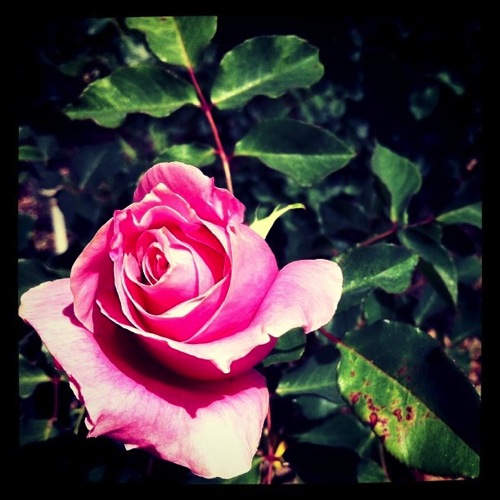Aspen
I took this photo years ago high atop Snow Bowl in the San Francisco Peaks just north of Flagstaff. A friend of ours, who lives in Sedona, took us to one of his favorite places admits the forest to just sit, talk and have lunch. I loved the screening effect of the trees — nothing but ferns and white tree trunks as far as you could see. I have to go elsewhere to see Aspens as they don’t grow here in the heat of Southern California, but I have seen then near Park City, Utah and, I believe somewhere in Northern California.
Follow DouglasWelch in Instagram
Aspen is a common name for certain tree species; some, but not all, are classified by botanists in the section Populus, of the poplar genus.[1]
These species are called aspens:
- Populus adenopoda – Chinese Aspen (China, south of P. tremula)
- Populus davidiana – Korean Aspen (Eastern Asia)
- Populus grandidentata – Bigtooth Aspen (eastern North America, south of P. tremuloides)
- Populus sieboldii – Japanese Aspen (Japan)[citation needed]
- Populus tremula – Eurasian Aspen (northern Europe and Asia)
- Populus tremuloides – Quaking Aspen or Trembling Aspen (northern and western North America)
The aspens are all native to cold regions with cool summers, in the north of the Northern Hemisphere, extending south at high altitudes in the mountains. They are all medium-sized deciduous trees reaching 15–30 m (49–98 ft) tall.
All of the aspens typically grow in large clonal colonies, derived from a single seedling, and spread by means of root suckers; new stems in the colony may appear at up to 30–40 m (98–131 ft) from the parent tree. Each individual tree can live for 40–150 years above ground, but the root system of the colony is long-lived. In some cases, this is for thousands of years, sending up new trunks as the older trunks die off above ground. For this reason, it is considered to be an indicator of ancient woodlands. One such colony in Utah, given the nickname of “Pando”, is estimated to be 80,000 years old,[2] making it possibly the oldest living colony of aspens. Some aspen colonies become very large with time, spreading about 1 m (3.3 ft) per year, eventually covering many hectares. They are able to survive forest fires, because the roots are below the heat of the fire, with new sprouts growing after the fire burns out.
Aspens do not thrive in the shade, and it is difficult for seedlings to grow in an already mature aspen stand. Fire indirectly benefits aspen trees, since it allows the saplings to flourish in open sunlight in the burned landscape. Lately, aspens have an increased popularity in forestry, mostly because of their fast growth rate and ability to regenerate from sprouts, making the reforestation after harvesting much cheaper, since no planting or sowing is required.
In contrast with many trees, aspen bark is base-rich,[clarification needed] meaning aspens are important hosts for bryophytes[3] and act as food plants for the larvae of butterfly (Lepidoptera) species—see List of Lepidoptera that feed on poplars.
Young aspen bark is an important seasonal forage for the European hare and other animals in early spring. Aspen is also a tree of choice of the European beaver. — Wikipedia
More information on Helianthus (sunflower):
- Acanthus
- Amaryllis
- Apricot (Prunus armeniaca)
- Azalea
- Banana
- Bonsai
- Bougainvillea
- Brugmansia
- Butterfly (Lepidoptera)
- California Flannelbush (Fremontodendron californicum)
- California Poppy (Eschscholzia californica)
- Calla Lily (Zantedeschia aethiopica)
- Campsis radicans
- Castor Bean (Ricinus)
- Caltapa
- Chives (Allium schoenoprasum)
- Clematis
- Camellia
- Currant (Ribes)
- Dahlia
- Datura
- Japanese Cherry (Prunus serrulata)
- Daffodil (Narcissus)
- Dietes (Fortnight Lily)
- Dudleya
- Echinacea
- Ecualyptus
- Freesia
- Fungi
- Gerbera Daisy
- Grape (Vitis vinifera)
- Helianthus (sunflower)
- Hibiscus (Malvaceae)
- Iris
- Jacaranda mimosifolia
- Joshua Tree (Yucca brevifolia)
- Kniphofia “Red Hot Poker”
- Lantana
- Lavender (Lavendula)
- Kousa Dogwood (Cornus kousa)
- Magnolia x soulangeana (Saucer Magnolia/Tulip Tree)
- Mandevilla
- Marigold (Calendula officinalis)
- Matilija Poppy (Romneya)
- Morning Glory (Convolvulaceae)
- Nandina
- Orange
- Orchid from the Southern California Spring Garden Show 2013
- Oriental Poppy (Papaver orientale)
- Polygonatum (Solomon’s Seal)
- Paperwhites
- Pineapple (Ananas comosus)
- Primula (Primrose)
- Queen Anne’s Lace (Daucus carota)
- Rosa ‘Mikado’
- Rudbeckia
- Salvia
- Squirrel
- Star Jasmine (Trachelospermum jasminoides)
- Succulents
- California Sycamore (Platanus racemosa)
- Sweet Potato (Ipomoea batatas)
- Tomato
- Water Lily (Nymphaeaceae)
- Wisteria





